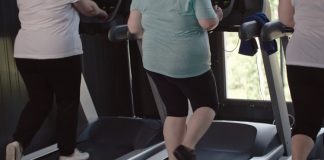One Million Years B.C., The Three Musketeers
Advertisements:
$30 Million
“I was a bigger-than-life persona before I was anyone in my own mind.” Praised as one of the hottest women of all time and as one of the sexiest stars in film history, Raquel Welch first turned heads in the 1960s with her performance in Fantastic Voyage (1966). Thanks to her stunning beauty and exotic charm, she signed on with 20th Century Fox and became an international sex symbol when she made a brief appearance clad in a doe-skin bikini in One Million Years B.C. (1966). She followed up with notable performances in films like Bedazzled (1967), Bandolero! (1968), 100 Rifles (1969), Myra Breckinridge (1970), and The Three Musketeers (1974), the latter of which earned her a Golden Globe Award for Best Actress.
Taking a break from film to work on television, Welch starred in several television films like Scandal in a Small Town (1988) and Tainted Blood (1993). By the 1990s, Welch became even more selective with her roles and has admittedly taken it easy over the last few decades with guest appearances on popular series like Sabrina the Teenage Witch (!996), Seinfeld (1997), Spin City (1997-2000), 8 Simple Rules (2004), and CSI: Miami (2012). On the silver screen, she made a cameo in Legally Blonde (2001) with her most recent credit coming in the 2017 film, How to Be a Latin Lover. So, what’s the 78-year-old doing now as one of the hottest women of all time? Let’s find out!
Early Life and Career
The eldest of three children born to an aeronautical engineer and his wife, Jo Raquel Tejada came into this world on September 5, 1940, in Chicago, Illinois. “My father came from a country called Bolivia. He was of Spanish descent,” Welch said of her father’s roots and the reason for her ethnic appearance. “I never went to Bolivia until I was 60 years old, but apparently when he was 17, he had already planned his entire academic curriculum so that he could graduate high school and enter college in the United States. That’s how much he wanted to come to this country.”
When Welch was two years old, the family relocated from the Windy City to San Diego, California where her dreams of becoming a performer blossomed. “My family was very conservative, and I had a traditional upbringing,” Welch said of her childhood and her dreams of making it big. “I was not brought up to be a sex symbol, nor is it in my nature to be one. The fact that I became one is probably the loveliest, most glamorous, and fortunate misunderstanding.”
She started ballet lessons at the age of seven and won her first beauty pageant at 14 when she was crowned Miss Photogenic and Miss Contour. At La Jolla High School, she was crowned Miss La Jolla and was later crowned Miss San Diego the Fairest of the Fair at the San Diego County Fair. By the age of 17, she gave up ballet on her instructor’s advice that she would never make it professionally because of her figure. (Little did the instructor know what was ahead for the stunning young performer!)
After retiring her ballet slippers, Welch focused on her future and was crowned the Maid of California before she graduated with honors from La Jolla High School in 1958. She accepted a theater arts scholarship to San Diego State College and, within a year, exchanged vows with her high school sweetheart, James Welch, on May 8, 1959. Balancing her new role as a wife, Welch starred in several local theater productions before becoming a mother with the birth of her son Damon on November 6, 1959. The family grew in size once again on December 26, 1961, with the birth of daughter Tahnee.
Despite having two young children, Welch was not happy at home. She quit college, left her husband, and picked up a job as a local weather forecaster with San Diego’s KFMB. She finalized her divorce in 1964 and moved her children to Dallas, Texas where she picked up a job as a model for Neiman Marcus. Months later, she made her way back to Los Angeles where she met agent, producer, and former child star Patrick Curtis who promised to make her into an international sex symbol. Coincidentally, the two fell in love, married in 1967, and divorced in 1972.
Making a Name for Herself in Hollywood
“I’d taken the bull by the horns by liberating myself and creating a career. It took guts—it was scary and chancy—but they discounted me as empty-headed; some little piece of fluff without any brain that happened to come along.” With Curtis in her corner, Welch kept her ex-husband’s last name to avoid being typecast as a Latina. She snagged minor roles in A House Is Not a Home (1964) and Roustabout (1964) starring Elvis Presley before she lost the part of Mary Ann on Gilligan’s Island to a rising star named Dawn Wells. From there, she made the rounds on television with appearances in Bewitched (1964), McHale’s Navy (1964), and The Virginian (1964).
In 1965, Welch caught her first big break when she was cast in a starring role in the beach flick, A Swingin’ Summer. Noticed for her performance by Life magazine, she caught the attention of 20th Century Fox who offered the young actress a seven-year exclusive contract to include five films in five years. While the studio toyed with the idea of changing her name to Debbie, Welch refused and later admitted, “Not everybody is comfortable with my ethnicity. When I first came along in the business, they didn’t really like the idea of my name being Raquel.” Instead of giving in, she stood her ground and settled in as 20th Century Fox’s newest star with her first leading role in the sci-fi flick, Fantastic Voyage, in 1966. The film was a huge hit with audiences and made Welch an overnight star as the network loaned her to Britain’s Hammer Studios for a part in their next film, One Million Years B.C. (1966), a remake of the 1940 Hal Roach film One Million B.C.
Welch’s three-line performance in One Million Years B.C. wouldn’t have been anything remarkable had it not been for her outfit. The svelte actress sauntered through the scene in a doe-skin bikini that critics later heralded as “mankind’s first bikini” and the “definitive look of the 1960s.” One critic for The New York Times wrote, “Although she had only three lines in the film, her luscious figure in a fur bikini made her a star and the dream girl of millions of young moviegoers.” The network quickly jumped on the bandwagon and produced a poster of Welch in the bikini, making her an instant pin-up girl.
As critics described her as “a marvelous breathing monument to womankind,” Welch’s career flourished. She starred opposite Marcello Mastroianni in the 1966 Italian film Shoot Loud… Louder… I Don’t Understand. She married Curtis in 1967 and starred in The Oldest Profession (1967), Fathom (1967), and Bedazzled (1967) before rounding out the decade with credits in The Biggest Bundle of Them All (1968), Bandolero! (1968), Lady in Cement (1968), 100 Rifles (1969), Flareup (1969), and The Magic Christian (1969). Welch tackled her most controversial role in 1970 when she starred as a transsexual heroine in Myra Breckinridge (1970), which also starred Mae West. Although many questioned Welch’s decision to take on the risqué role, her performance earned widespread praise as the film’s producer praised her talent and beauty saying, “If a man were going to become a woman, he would want to become the most beautiful woman in the world. He would become Raquel Welch.”
Myra Breckenridge sealed Welch’s fate as an international icon and earned her a place as one of the most desired women of the 1970s. She divorced Curtis in 1972 and, while many argued that she only married him to advance her career, she proved her talents were award-worthy in 1974 when she gave a Golden Globe Award-worthy performance in The Three Musketeers. She followed up with noteworthy performances in The Four Musketeers (1974), The Wild Party (1975), The Prince and the Pauper (1977), and Animal (1977). On television, she made guest appearances on Saturday Night Live (1976), The Muppet Show (1978), and Mork and Mindy (1979).
In 1979, Welch was at the height of her career when Hugh Hefner invited her to bare it all for Playboy magazine. While a nude pictorial certainly could’ve boosted her career, Welch surprisingly turned Hefner down. “You don’t do that if you are a certain kind of a woman and that’s the kind of woman I was raised to be… I am my father’s daughter and stripping down is just not the way you behave,” Welch said. Hefner compromised and let Welch pose for the magazine in a high-cut red swimsuit. “Raquel Welch, one of the last of the classic sex symbols, came from the era when you could be considered the sexiest woman in the world without taking your clothes off,” Hefner wrote. “She declined to do complete nudity, and I yielded gracefully. The pictures prove her point.”
Life Today
“What I do on the screen is not to be equated with what I do in my private life. Privately, I am understated and dislike any hoopla.” By the 1980s, Welch had more fame than she ever imagined and stepped away from life in the spotlight after she married French-American producer, screenwriter, and director André Weinfeld in 1980. During this time, she turned her attention to the stage and, after enjoying early success in her one-woman act in Las Vegas, ventured to Broadway with a starring role in the 1981 production of Woman of the Year. Over a decade later, she returned to Broadway in 1997 to take over for Julie Andrews and Liza Minnelli in the title role of Victor/Victoria.
After her stint on Broadway and her 1990 divorce from Weinfeld, Welch was even more selective with her work and starred in several television films like Trouble in Paradise (1989), Tainted Blood (1993), and Torch Song (1993). In 1994, she made an uncredited appearance as herself in Naked Gun 33 ½: The Final Insult and returned to the silver screen four years later in Chairman of the Board (1998), which earned her a Golden Raspberry Award nomination for Worst Supporting Actress.
In 2001, Welch joined Reese Witherspoon in Legally Blonde and played Hortensia in Tortilla Soup. She returned to television as well with recurring roles on Spin City (1997-2000), American Family (2002), and Welcome to The Captain (2008). In 2007, she became the newest face of the MAC Cosmetics Beauty Icon series and introduced Mac’s newest line for “strong and wild, yet sultry and exotic” women.
Over the last decade, Welch has made appearances in popular series like CSI: Miami (2012), in television films like House of Versace (2013) and The Ultimate Legacy (2015), and in newer sitcoms like Date My Dad (2017). Her most recent film role came in 2017 when she starred as Celeste Birch in How to Be a Latin Lover. With her career as a television and film actress obviously slowing down, the 78-year-old is still praised as one of the sexiest women of all time but that doesn’t mean she’s happily embraced the title. “Beauty to me is a crutch,” she says. “It’s what I built my career on. To be accepted by other human beings was always my first insecurity… When the equipment arrived about age 14, that was how I first knew people liked me… Up until that time, I was really quite frightened that people didn’t like me at all.”
As her career flourished in the spotlight, Welch remained true to herself and how she was raised—a fact that she remains proud of to this day. “People used to come knocking on my door saying, ‘Your trouble is that you’re a sex symbol who doesn’t do enough sexy things.’ I’d say to myself, ‘You think that if you pressure me I’ll fold.’ But if I did it, all it would mean is that I sold out,” Welch said. “The whole sex-symbol thing is part of what I do as an actress. It’s kind of a character I play. It’s part of me, but not the whole me.” There’s obviously a lot more to the actress who skyrocketed to fame in a doe-skin bikini over five decades ago!
->





